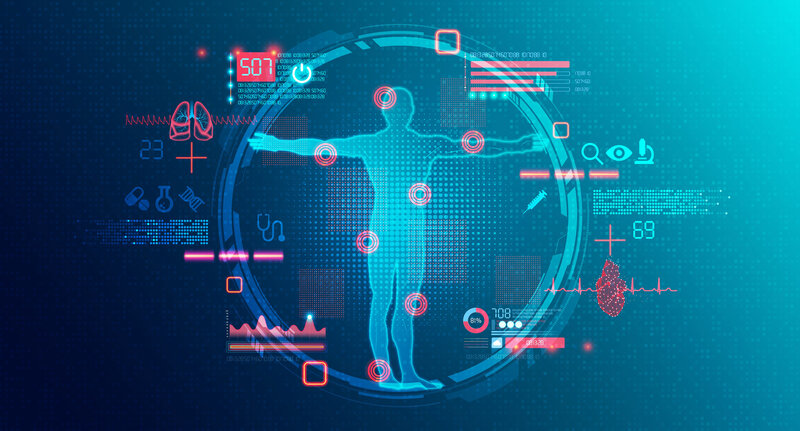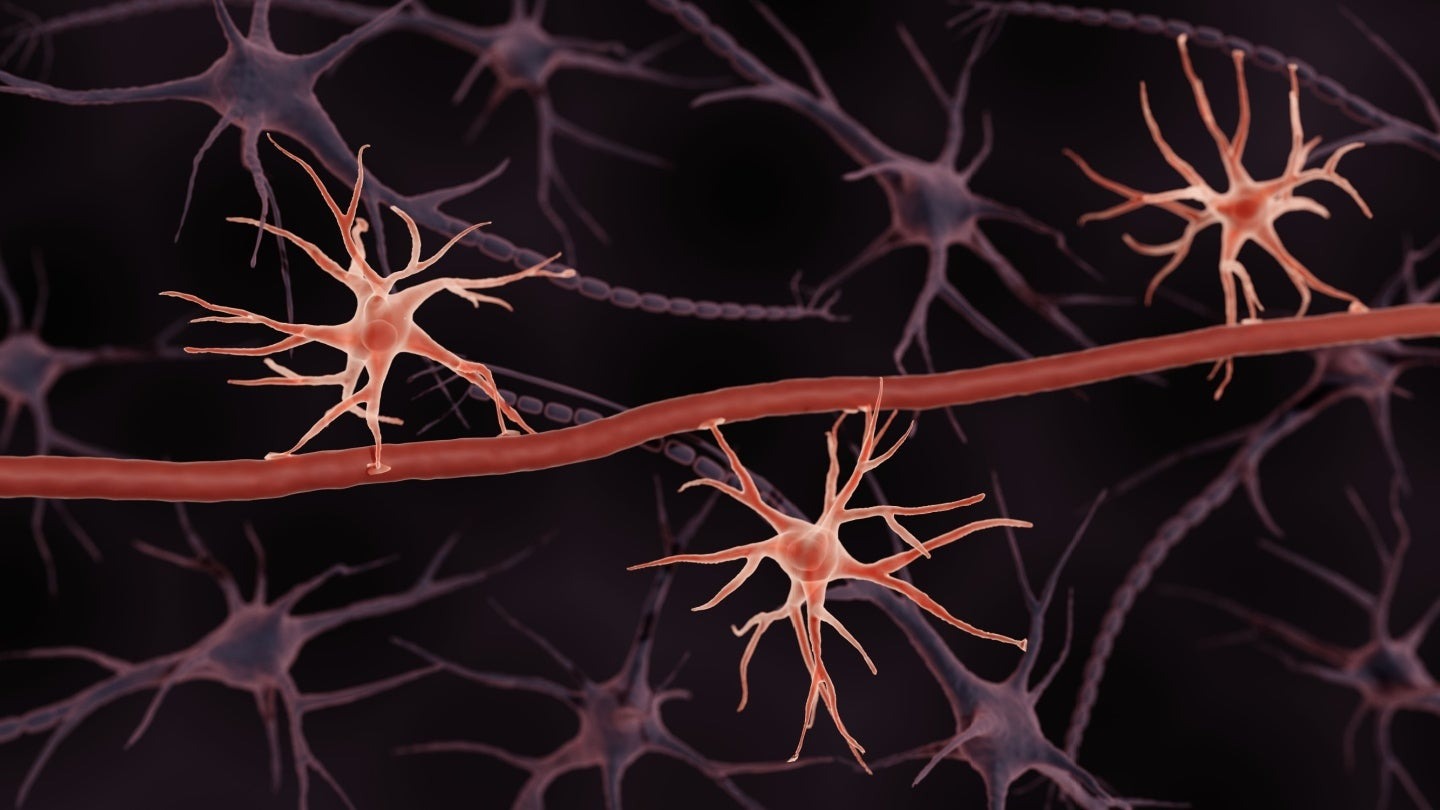Feature
AI and biosensors drive innovation in point‑of‑care testing
As the point of care testing market expands, industry leaders are making progress with mobile, wearable, and lab-on-a-chip technologies to meet growing demand, reports Bernard Banga.

The Usage of Technology and Data Analysis to Improve Patient Care and Healthcare Administration. Credit: ArtemisDiana / Shutterstock
Following the Covid-19 pandemic, the World Health Organization (WHO) identified bedside diagnostics as a top research priority, emphasising the need for rapid and efficient diagnostic solutions. And the demand for point-of-care (POC) tests is surging.
Key players such as Abbott, Roche, Siemens, Danaher, and Becton Dickinson are making significant investments in the development of miniaturised, connected technologies. These advances enable complex analysis from small samples directly at the patient’s bedside, meeting the growing demand for fast, accurate diagnostic solutions for both infectious and chronic diseases. In North America alone, more than 70% of primary care facilities are utilising POC tools, reflecting the increased demand for rapid testing solutions.
Biosensor and microchip advances boost bedside monitoring
New technologies in biosensors and microchip integration are advancing rapidly. Alongside polymers like polydimethylsiloxane (PDMS), thermopolymers (PMMA, PS), and ferroelectric materials used in molecular diagnostics, industry leaders now have access to new materials with properties including biocompatibility, optical transparency, flexibility, and chemical resistance.
Structural and functional hydrogels integrated into "lab-on-foil" systems enable rapid, cost-effective detection at the patient’s bedside. Their compatibility with smartphones for colour analysis is promoting widespread adoption of oral and respiratory diagnostics. The use of nanomaterials, such as gold nanoparticles and graphene, is significantly improving biosensor sensitivity. These materials, especially in ultra-sensitive fluorescence detection, are increasing sensitivity by up to a factor of 100 compared to conventional devices, amplifying optical or electrochemical signals.
Researchers at the California Institute of Technology (Caltech) have developed a printable, molecule-selective core-shell nanoparticle for wearable sensors. This technology utilises inkjet printing to create specialist nanoparticle networks, enabling mass production of portable sensors which monitor human sweat to track molecular fluctuations. “What sets these sensors apart is their ability to measure various biomarkers, including vitamins, hormones, metabolites, and medication,” explains Wei Gao, biomedical engineer at Caltech.
This innovation, published in Nature in February 2025, has been validated for tracking metabolites in long-Covid patients and monitoring anti-cancer drug concentrations at the City of Hope Medical Center in Duarte, California.
Microfluidic technology improvements changing the face of POCT applications
Recent advances in miniaturised chip technologies and microfluidics, have led to the development of novel systems for point-of-care testing (POCT). Among these, lab-on-a-chip technologies stand out as key drivers, particularly in the diagnosis of infectious diseases. These technologies enable critical bioassays – such as microbiological culture, polymerase chain reaction (PCR), and enzyme-linked immunosorbent assays (ELISA) – to be performed directly at the point of care.
Emerging microfluidic technologies encompass a range of miniaturised components designed to analyse chemical and biological samples at the microscale. Microfluidic-based POCT devices are already widely used in molecular biology, chemical, and biochemical analysis, enabling both detection and fluid regulation within a single component.
Currently, POCT diagnostics are largely based on two primary technologies: lateral flow assays (LFA) and nucleic acid amplification. LFA technology, commonly used for pregnancy tests, rapid HIV detection, and diagnosing infectious diseases such as Ebola, Dengue, Malaria, and Zika, is simple and effective for various conditions. On the other hand, nucleic acid amplification – via PCR and isothermal amplification – offers greater sensitivity and specificity. This method is invaluable for detecting a range of infectious diseases, including mycoplasma pneumonia, bordetella pertussis, legionella pneumonia, influenza A, SARS, and more recently, SARS-CoV-2.
AI-assisted biosensors in POC testing
The integration of artificial intelligence (AI) and connected technologies into POC devices – such as smartphones and wearables – marks a new frontier in healthcare. These mobile and wearable systems enable real-time, in-vitro signal detection and continuous monitoring, improving user comfort and cost-effectiveness. By transmitting results directly to healthcare providers via wireless communication, they offer a broad diagnostic scope, analysing body fluids such as blood, sweat and saliva for metabolites, hormones, proteins, viruses, and bacteria.
AI is playing a transformative role in automating diagnostics and improving the management of chronic diseases such as diabetes and cardiovascular conditions. According to Lounsi Boudarene, CEO of Keyrus Life Sciences Europe, AI-powered systems have reduced hospitalisations by 20% through early disease detection. AI technologies deployed in Lab-on-a-Chip devices for POCT primarily include machine learning, deep learning, and hybrid algorithms. Half of AI-based POCT applications utilise deep learning for early infectious disease detection, image recognition, and predictive analytics. These models significantly enhance diagnostic accuracy, cutting processing time from 15 minutes to just two, while improving accessibility via smartphone-based platforms which integrate AI for real-time microfluidic analysis.
Moreover, 40% of AI-driven POCT applications employ machine learning algorithms, such as Random Forest, to analyse complex data and classify results. These algorithms achieve 95% diagnostic accuracy, with specificity at 82.57% and sensitivity at 95.52%. Lastly, 10% of AI applications utilise hybrid algorithms, combining deep learning with specialist architectures like YOLO and CNN-LSTM, enabling rapid diagnostics. This advance allows certain tests, such as COVID-19 antigen kits, to be analysed in as little as two minutes.
Four generations of Point-of-Care Testing technology
1980s–1990s: The emergence of simple diagnostic tools, such as urine test strips for pregnancy detection and glucose meters for blood glucose monitoring, enables rapid diagnostics without the need for central laboratories.
2000s: The introduction of more sophisticated immunochromatographic tests facilitates the rapid detection of infectious diseases, including HIV and influenza, directly at the patient’s bedside.
2010s: Molecular testing, particularly polymerase chain reaction (PCR)-based diagnostics, becomes more prevalent, allowing greater accuracy in identifying conditions such as tuberculosis and certain viral infections.
2020–2025: The integration of digital and connected technologies, including biosensors and microchip-based devices, provides real-time results and seamless connectivity with electronic health records. These innovations enhance continuous disease monitoring and enable more personalised patient care.
Sustainability in POC testing: lab-on-a-chip for a low-carbon future
“The field of lab-on-a-chip needs to meet important challenges around our global targets in sustainability and net zero,” says Professor Jonathan Cooper, Wolfson Chair of Bioengineering at the University of Glasgow, UK. “This includes developing smart analytical systems which sense environmental changes and mitigating single-use plastics in diagnostics while adopting low-power, recyclable microsystem technologies.”
Addressing the environmental impact of POC Testing
Most lab-on-a-chip devices are single-use and made from plastics derived from non-renewable sources, adding to medical waste. While some are disposed of responsibly, many end up in landfill. “New biodegradable materials, including those sourced from cellulose or paper, could replace halogenated plastics such as polyvinyl chloride,” adds Cooper. “However, even natural biopolymers such as cotton present environmental challenges.”
A review in Ecotoxicology and Environmental Safety examines the broader 'plastics problem,' focusing on bioplastics in diagnostics. It underscores the need to consider the full product life cycle and carbon footprint, measured in CO₂ equivalent (eCO₂), when developing sustainable alternatives.
Digital health and local manufacturing: reducing the carbon footprint
Expert systems in digital health play a key role in delivering vital information at the point of care, reducing transport needs and infrastructure burden. “Local manufacturing can further contribute to net-zero goals by producing diagnostic devices near the point of use,” Cooper notes. One example is the Diatropix initiative in Senegal, where it is proposed that diagnostic tools be manufactured in Africa, close to where they are needed.
Innovations in sustainable manufacturing
Industry leaders are discussing how lab-on-a-chip advancements will shape society in the coming years. “Connected to this will be the impact of sustainable manufacturing technologies that reduce costs while improving reliability – but not at the expense of the environment,” says Cooper.
Emerging manufacturing approaches include optimising micro- and nano-lithographic methods while integrating techniques such as 3D printing and nanoscale self-assembly. These innovations could usher in a new era of eco-friendly, high-performance lab-on-a-chip solutions aligning with global sustainability objectives.
However, Vellacott does add space biomanufacturing will likely generate valuable intellectual property (IP). This would provide a basis for terrestrial biomanufacturing, potentially shifting market dynamics depending on the applications of technologies. Over time, certain applications such as complex organs could be more permanently paired with space manufacturing.
Longer term, he anticipates that space biomanufacturing will support human exploration as further space environments are built.
Commenting on what the bigger opportunity of space manufacturing is between patients here on Earth or supporting space travel, Dr Bailet says: “It’s pretty clear that it’s going to be for Earth market because the market is so big, the opportunity is clearly there.”
The use cases for human exploration will be anecdotal.
Russell H. Taylor, John C. Malone professor in Department of Computer Science

Astrocytes are a type of neural cell that builds the BBB, and Excellio plans to derive exosomes from them to make them even better at targeting the brain. Credit: ART-ur / Shutterstock
Caption. Credit:

Phillip Day. Credit: Scotgold Resources
Total annual production
Australia could be one of the main beneficiaries of this dramatic increase in demand, where private companies and local governments alike are eager to expand the country’s nascent rare earths production. In 2021, Australia produced the fourth-most rare earths in the world. It’s total annual production of 19,958 tonnes remains significantly less than the mammoth 152,407 tonnes produced by China, but a dramatic improvement over the 1,995 tonnes produced domestically in 2011.
The dominance of China in the rare earths space has also encouraged other countries, notably the US, to look further afield for rare earth deposits to diversify their supply of the increasingly vital minerals. With the US eager to ringfence rare earth production within its allies as part of the Inflation Reduction Act, including potentially allowing the Department of Defense to invest in Australian rare earths, there could be an unexpected windfall for Australian rare earths producers.
